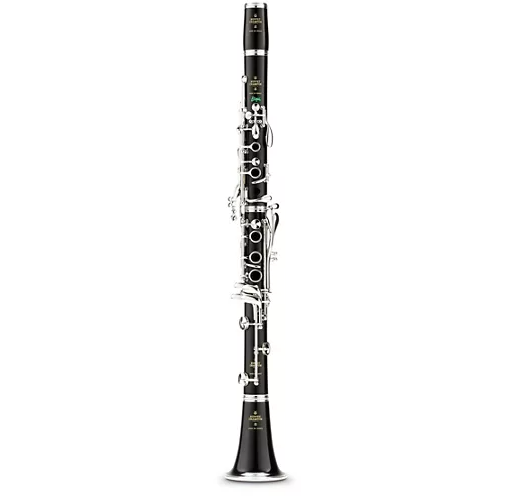- Euphonium vs Baritone Compared - September 5, 2022
- How to Find the Best Contra Alto Clarinet - August 20, 2022
- Mellophone vs Trumpet Compared - August 6, 2022
If you’re a clarinet player, you almost certainly use a Boehm clarinet. But while the Boehm fingering system is the most popular worldwide, it is not the only one. In some regions (mainly Germany) and some genres (notably klezmer, New Orleans jazz, and Balkan folk music), clarinetists traditionally use Albert instruments.
Some performers swear there is little audible difference between Boehm and Albert clarinets, while other musicians insist that the Albert has a darker, warmer sound and better intonation. The major differences between Boehm and Albert clarinets are:
- Boehm clarinets are the most common clarinet worldwide, whereas Albert clarinets are found mainly (but not exclusively) in Germany and the Near and Middle East.
- Boehm clarinets have a standardized key system, whereas Albert clarinets come in several different configurations
- Boehm tone holes are evenly placed, whereas Albert tone holes have slightly uneven spacing
- Boehm clarinets are the most popular clarinet worldwide, whereas Oehler clarinets have largely replaced Albert clarinets
But to understand the differences between these two clarinet styles, we first have to understand a little more about the clarinet itself. Let’s go back to the early days of clarinet history – and clarinet prehistory!
A Brief History of Clarinets
Musicians have played reed instruments for thousands of years, but the clarinet has only been around for a bit over 300 years. The clarinet is a triumph of modern technology and invention that involved some of history’s most famous instrument makers.
The Chalumeau
Before there were clarinets, there were chalumeaux. Chalumeaux looked very much like a recorder, but instead of blowing into the mouthpiece hole directly, the chalumeau player blew through a reed whose vibrations added a more penetrating, nasal quality to the sound.
Some chalumeaux used a single reed, while others used a double reed. But although the chalumeau had a lovely sound, it only had a range of an octave or so and could not play a chromatic scale.
Around 1690 or so, a Nuremberg instrument maker named Johann Christopher (J.C.) Denner added two keys to the chalumeau, increasing the range by a fifth.
Over time Denner, and later his sons added a barrel, lengthened the instrument, and gave the chalumeau a bell, creating the modern clarinet. (Other instrument makers did the same with the double reed chalumeau and transformed it into the hautbois that became the oboe).
In 1812 Belgian instrument maker Iwan Mueller introduced his new invention to the Paris Conservatoire, keypads. Before Mueller, clarinet makers used brass keys that leaked air.
Mueller’s pads, made from kid leather stuffed with felt, fit snugly into the countersunk tone holes. These new keypads produced more precise intonation and allowed clarinet makers to add additional keyed holes so that players could change keys without awkward fingerings or off-pitch notes.
Mueller’s 13-key clarinet did not impress the Paris academics, but musicians loved the new possibilities Mueller’s instrument offered. Many performers bought Mueller instruments, and many instrument designers and clarinetists began tinkering with new ways to improve Mueller’s vision.
Théobald Boehm
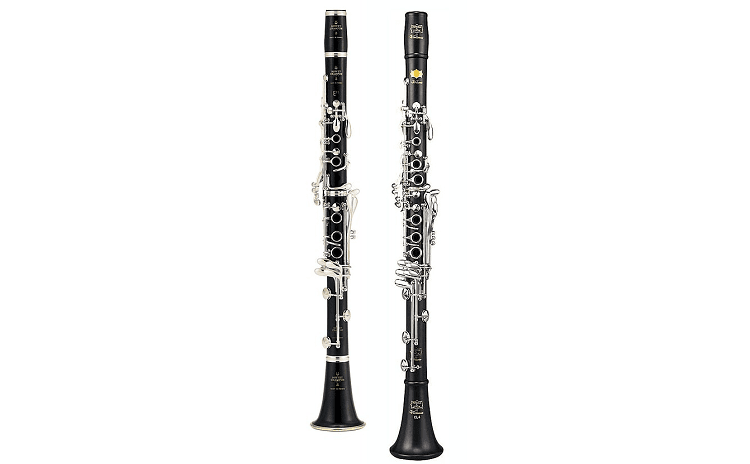
Théobald Boehm was a flautist, not a clarinet player. But the system of keys Boehm invented for his flute in 1832 was so groundbreaking that it made many players of other wind instruments envious.
Boehm designed his flute following the burgeoning science of acoustics. He used interlinked rods to connect keys to tone holes in positions beyond the reach of even the most talented musician. Most importantly, the Boehm flute could play in any key (though the fingerings for some keys were and remain more challenging than others).
Between 1839 and 1843, clarinet virtuoso and Paris Conservatory teacher Hyacinthe E. Klosé worked with instrument maker Louis-August Buffet on a new and improved clarinet.
The Klosé-Buffet clarinet used six movable rings around the tone holes. When a clarinetist covered the hole they also depressed a padded key located elsewhere on the clarinet body. The ring system eliminated the need for complicated cross-fingerings, while seventeen keys offered the clarinetist still more fingering options.
The Boehm clarinet had better intonation than earlier clarinets, with a brighter and less veiled sound. The key system also made difficult and fast passages easier, expanding the range of what composers could expect from a good clarinetist.
Pre-Boehm clarinets had tone holes spaced about 2cm apart, while Boehm’s key system allowed for nearly twice as many tone holes. Boehm’s new design allowed for more accurate individual notes and scales.
Eugène Albert
While the Klosé-Buffet clarinet represented a radical rethinking of the Mueller clarinet, Belgian instrument maker Eugène Albert took a more conservative approach. Albert’s clarinet looked and played like a Mueller clarinet but added some innovations Albert learned during his apprenticeship with Adolphe Sax (most famous today for his saxophone).
The Albert clarinet had fewer keys than the Buffet, and even today British clarinetists distinguish between the “Boehm system” and the “simple system.” (Because it became popular in Germany, the Albert and related clarinets are often called “German system” and the Boehm “French system”).
Albert clarinets were popular with early jazz musicians and were a staple of Dixieland and New Orleans jazz. With the rise of bebop and modern classical music, the simple system proved too simple for the heavy chromatic demands.
Between 1900 and 1920, Oskar Oehler (1858-1936) modified the Albert system into today’s Oehler system. Oehler system clarinets are more complex than the Albert (and the Boehm), but many musicians find they have better clarity and intonation.
Today Oehler clarinets are the standard instrument in many German orchestras. Many jazz and folk musicians have also switched to Oehler (or simplified Oehler) clarinets, but some still swear by the Albert design.
Differences Between a Boehm and Albert Clarinet
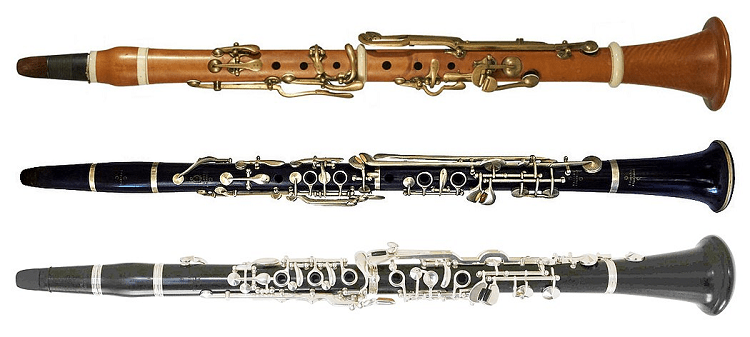
Mouthpiece
Oehler clarinets traditionally use a longer. narrower mouthpiece and a harder reed than Boehm clarinets. If you’re using a 2.5 reed on your Boehm, you’ll get the best sound out of an Oehler with a 3.5 reed. In contrast, folk and klezmer musicians often play their Albert clarinets with softer reeds to produce a haunting recorder-like sound.
Boehm clarinets hold the reed in place with a metal or rubber ligature. While some Albert clarinetists use a ligature, German clarinetists traditionally affix the reed to the mouthpiece with string, as they believe string is more sonically transparent than any metal or rubber holder.
Bore
A clarinet is cylindrical, with a bore that remains mostly consistent throughout the length of its body. But a completely cylindrical clarinet would have intonation issues with many notes. To compensate for those problems, Boehm clarinets taper slightly toward the bell. Their top joint is also slightly enlarged to bring notes more closely into tune.
Albert clarinets have much less taper and some are entirely cylindrical from the mouthpiece to the bell flare. Their more cylindrical design gives German clarinets greater clarity on notes, especially on the low end. But it also removes some of the brilliance, resulting in a darker and woodier tone.
Tone Holes
Simple system Albert clarinets have fewer rings on their tone holes. This means that a player must compensate for any pitch deviations with embouchure, breathing, or finger placement. But it also provides a skilled player more opportunities for slurs and glissandos that are difficult to perform on an instrument with more rings and keys.
The tone holes on an Albert clarinet are more widely spaced and placed at slightly uneven intervals. (The Albert uses this placement to correct for tonal imbalances that the Boehm handles with rings, keys, and bore).
Fingerings
The Boehm system has changed very little since the mid-19th century. While there are a few variants out there, those clarinets are uncommon and almost every Boehm clarinet will have the same key setup.
The Albert system is not nearly so standardized. While Albert became famous as the “simple system,” Oehler clarinets may have more keys than a Boehm clarinet. But while the fingerings are not identical, Albert, Boehm, and Oehler clarinets are all based on the chalumeau so many fingerings are very similar.
Instrument Recommendations
New Albert clarinets can be hard to find in music shops, and older Albert clarinets come with all the issues you would expect from a century-old woodwind. But if you seek, you can find some excellent new Albert instruments. There are also several companies making clarinets on the Albert-based Oehler system.
Hakam Din Simple (Albert) System Clarinet

While Albert system clarinets have largely gone out of fashion with contemporary jazz and classical musicians, they are still widely used in Turkish, Armenian, Kurdish, Arabic, Jewish, and Balkan folk and jazz music.
Hakam Din makes Simple System clarinets for those markets at very reasonable prices. This B♭ clarinet is made of Indian cocobolo wood and comes with cork grease, a cleaning cloth, a mouthpiece kit, a wooden case, and an extra reed. You can order your Hakam Din clarinet in standard A=440 pitch or the A=458 pitch common in many Balkan and Turkish arrangements.
Pros
- Excellent for folk music
- An inexpensive introduction to the Albert system
- Comes with everything you need to get started on your new Albert clarinet
Cons
- Great for folk music, but will struggle with unusual keys and highly complex chromatic transitions
Thomann GCL-420 MKII Bb-Clarinet
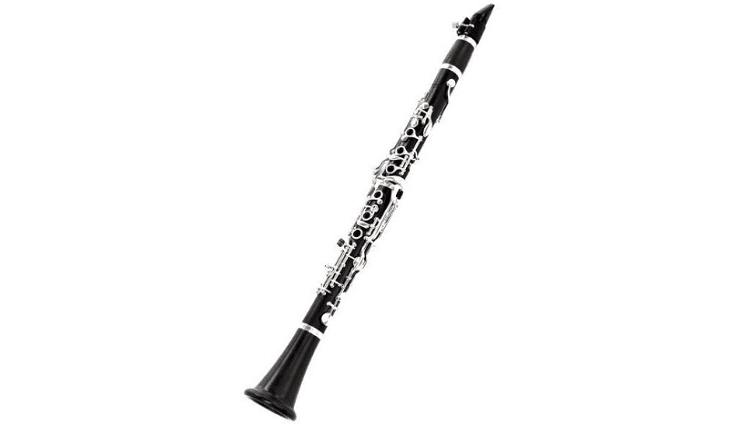
The Thomann GCL-420 has a few more keys than the Hakam Din and will be more suited for music requiring multiple key changes. Thomann, Europe’s largest musical instrument retailer, constructs the GCL-420 of grenadilla wood. (Most student clarinets nowadays are made out of resin or other synthetic materials).
Thomann’s extra keys will give you more fingering options on tricky passages. And if you want to master that smoky rich Sidney Bechet sound, the Thomann will help you get there.
Pros
- Solid intermediate instrument from Europe’s largest musical instrument retailer
- Will serve as excellent second instrument for advanced Boehm clarinetists
- Layout very similar to Albert clarinets of early 20th century
Cons
- Tone not as rich and broad as more advanced clarinets
W. Schreiber D61 Prestige Oehler System Clarinet

If you want to play German symphonic and orchestral music the right way, you’ll have a hard time beating W. Schreiber’s D61 clarinet. At over $5,500 the D61 is not cheap, but it’s one of the finest German system clarinets on the market today.
Made with aged grenadilla wood, the D61 has five rings, one ring cover, and 27 keys. Schreiber’s D61 has the delicacy for chamber work but can go as loud as you would like in the altissimo range. While you can find more expensive Oehler clarinets, the D61’s price-to-value ratio gives it the most bang for your professional musical buck.
Pros
- A clarinet fit for the finest German orchestras
- Marvelous, rich tone
- Comes with two mouthpieces and a luxury leather case.
Cons
- Expensive
Boehm System
There are a greater variety of Boehm clarinets on the market at every price and skill level. Here are three of the best beginning, intermediate/advanced, and professional Boehm clarinets available today.
Yamaha YCL-255
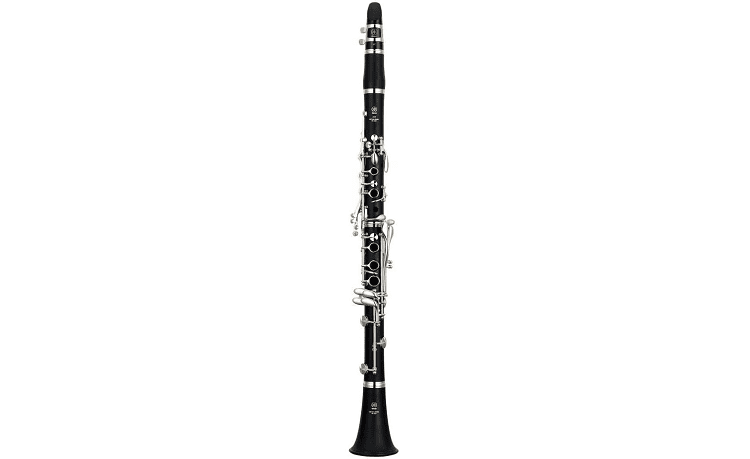
Many students start on the cheapest available instruments, then lose interest when they can’t make them sound good. Yamaha’s YCL-255 is not the cheapest clarinet on the market, but it is a highly regarded student model that includes many of the features you find on Yamaha’s professional models.
The YCL-255‘s durable ABS resin body will stand up to hours of rehearsal and give you a good base from which to master your skills. And when you move on to more advanced models, you’ll find the YCL-255 holds its resale value and can serve you well as a rehearsal or travel instrument.
Pros
- Yamaha has excellent quality control in its professional instruments
- A durable instrument that will survive young inexperienced players
- A standard student model recognized and admired by most teachers
Cons
- You will want to move up to a more advanced model as you improve
The YCL-255 combines state-of-the-art production expertise with high-end Yamaha clarinet features. The result is an outstanding entry-level instrument that delivers a warm, resonant tone that is remarkably similar to that of a wood clarinet.
Selmer CL211

Selmer is another legendary manufacturer of American band instruments, and the CL211 is a superb choice for a clarinetist looking for a more advanced instrument. The CL211 has a warm, well-focused tone suitable for every genre of music.
While student instruments are typically made with resin, the CL211 is made with genuine unvarnished grenadilla wood for the classic clarinet tone. The Selmer CL211 should see you through your conservatory years and may be the last clarinet you need if you are using it as a second instrument.
Pros
- A classic instrument by a legendary instrument maker
- Durable, highly responsive key mechanisms
- Ergonomic design makes the CL211 more playable for long hours
Cons
- Those with big fingers may find the key placement cramped
Selmer's CL211 clarinet is designed to create a rich, warm sound. The undercut tone holes, rubber mouthpiece and grenadilla wood help accomplish that beautiful tone. The CL211 is a medium-small bore clarinet that will not disappoint when producing the warm clarinet sound.
Buffet Crampon R13 Green LinE
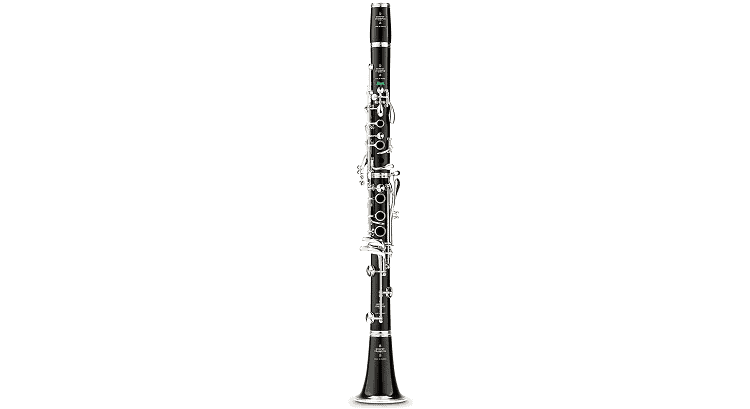
Buffet Crampon founder Louis-August Buffet built the first Boehm clarinets, and the Buffet Crampon R13 is one of the most popular instruments among professional clarinetists worldwide. But Buffet Crampon isn’t resting on its laurels!
Their Green LinE series combines powdered grenadilla wood with carbon fiber for a clarinet body that has the acoustics of wood but is resistant to heat, humidity, and impact damage. With a Buffet Crampon R13 Green LinE, you’ll be ready for anything your conservatory or conductor throws in your direction in any environmental conditions.
Pros
- The gold standard among professional clarinetists
- Great projection that will rise above orchestral swells
- Will stand up to the rigors of touring and outdoor performance
Cons
- Some musicians feel the Green LinE has a less complex and rich sound than wooden Buffet Crampons
The R13 Greenline Series of clarinets follows the same manufacturing process as the 100% grenadlla R13s. Thanks to the addition of carbon fibers, Greenline clarinets withstand admirably to variations in atmospheric conditions.
Famous Albert & Boehm Clarinetists
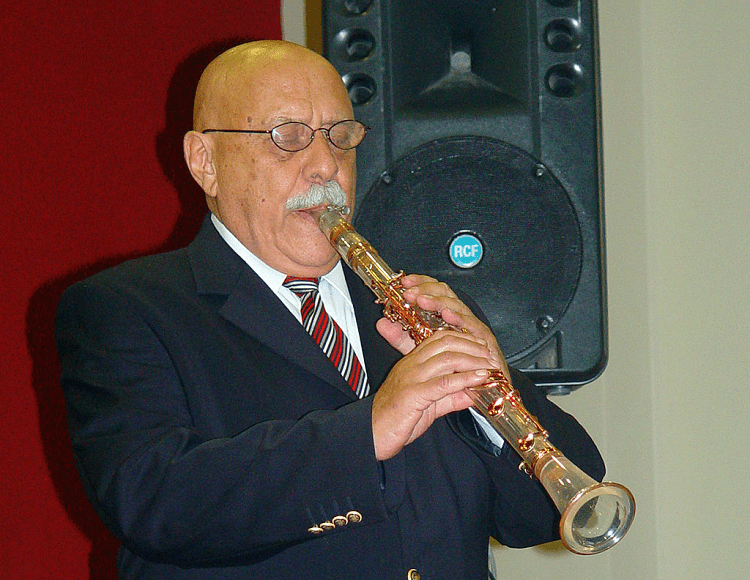
Some famous Albert clarinetists include:
- Jimmy Dorsey (1904-1957): Though he is more famous today as a bandleader and alto saxophonist, Jimmy Dorsey got his start on an Albert clarinet. By the end of his career Dorsey’s clarinet of choice was a worn old beast he put together himself that combined elements of the Albert and Boehm systems.
- Sidney Bechet (1897-1959): Legendary New Orleans musician Sidney Bechet used an Albert clarinet because he thought it had a richer and fuller sound than a Boehm, and because that was what everyone in New Orleans played when he was young.
- Giora Feidman (1936- ): Argentine/Israeli clarinetist Giora Feidman isn’t just the world’s greatest living klezmer clarinetist, he is also a classical clarinetist who performed the solos on the Schindler’s List soundtrack. Feidman plays a German system Uebel clarinet.
Among the most famous Boehm clarinetists we find:
- Manuel Gomez (1859-1922): Gomez, a Spanish clarinetist, was a founding member of the London Symphony Orchestra and is credited with introducing the Boehm system to Great Britain.
- Benny Goodman (1909-1986): Goodman was not just a great jazz musician and bandleader, he was a world-class classical clarinetist who commissioned works from Bartok and Copeland. Goodman favored Boehm system Selmer clarinets for his jazz playing and Buffet Crampons for classical performance.
- Artie Shaw (1910-2004): Goodman was the “King of Swing,” but in the 1930s and 40s Artie Shaw was the King of Clarinet. Like Goodman, Shaw switched between Selmer and Buffet Crampon clarinets.
Frequently Asked Questions (FAQ)
Answer: Clarinets are among the easiest instrument for beginners. Once you learn how to blow into the clarinet without squeaking, you simply have to learn the fingerings. Next to learning how to blow a harmonic series on a brass instrument, that’s child’s play.
That being said, learning how to play a clarinet may be easy but learning how to play a clarinet well can take decades of practice.
Answer: Because the earliest clarinets could only play well in a few keys, 18th-century clarinetists typically owned three clarinets in A, B♭, and C. As technology improved the range of clarinets, there was less need for multiple instruments. The C clarinet, the highest-pitched of the three, had a brighter and more piercing tone and fell largely (but not entirely) out of use.
Clarinetists still use the A clarinet to play in remote keys where a B♭ player would face many accidentals and challenging transitions. But the B♭ clarinet and the E♭ clarinet (pitched a fifth higher) are the standard clarinets in use today.
• Answer: Embarrassing squeaks are the bane of every beginning clarinet player. Some things that can lead to those nails-on-a-blackboard screeches include:
• Reeds: if your reed is chipped or cracked, its uneven vibrations can lead to squeaking. Make sure your reed is moist and properly placed before you start playing, as dry and unbalanced reeds are also common squeak culprits.
• Hand position: Make sure your fingers are completely covering the tone holes.
• Embouchure: If you are holding the mouthpiece too far in your mouth, you will have difficulty keeping control of reed vibrations.
• Airflow: Beginning clarinet players frequently hold their jaw too tense and blow too hard, with high-pitched and painful results.
Conclusion
For most clarinet players, a Boehm system clarinet is the best choice. There is a much wider variety of Boehm clarinets available, and the overwhelming majority of instruction material on the market is written for Boehm instruments. Beginners will have a much easier time finding a Boehm tutor. Advanced clarinetists will find more job opportunities for Boehm clarinetists than Albert players.
If you are a jazz, klezmer, or world music player, a simple Albert system clarinet like the Hakam Din will be a great addition to your instrument collection. The Hakam Din clarinet is an excellent and inexpensive way to include authentic local instruments in your performances or master a new fingering style.
If you are serious about German symphonic and chamber music, the W. Schreiber D61 will be your best clarinet choice, while the Buffet Crampon R13 is best for those who want a clarinet for a broader repertoire.
Whatever your choices, your clarinet can be an investment in a lifetime of music. Happy playing!
For more interesting readings check out:




